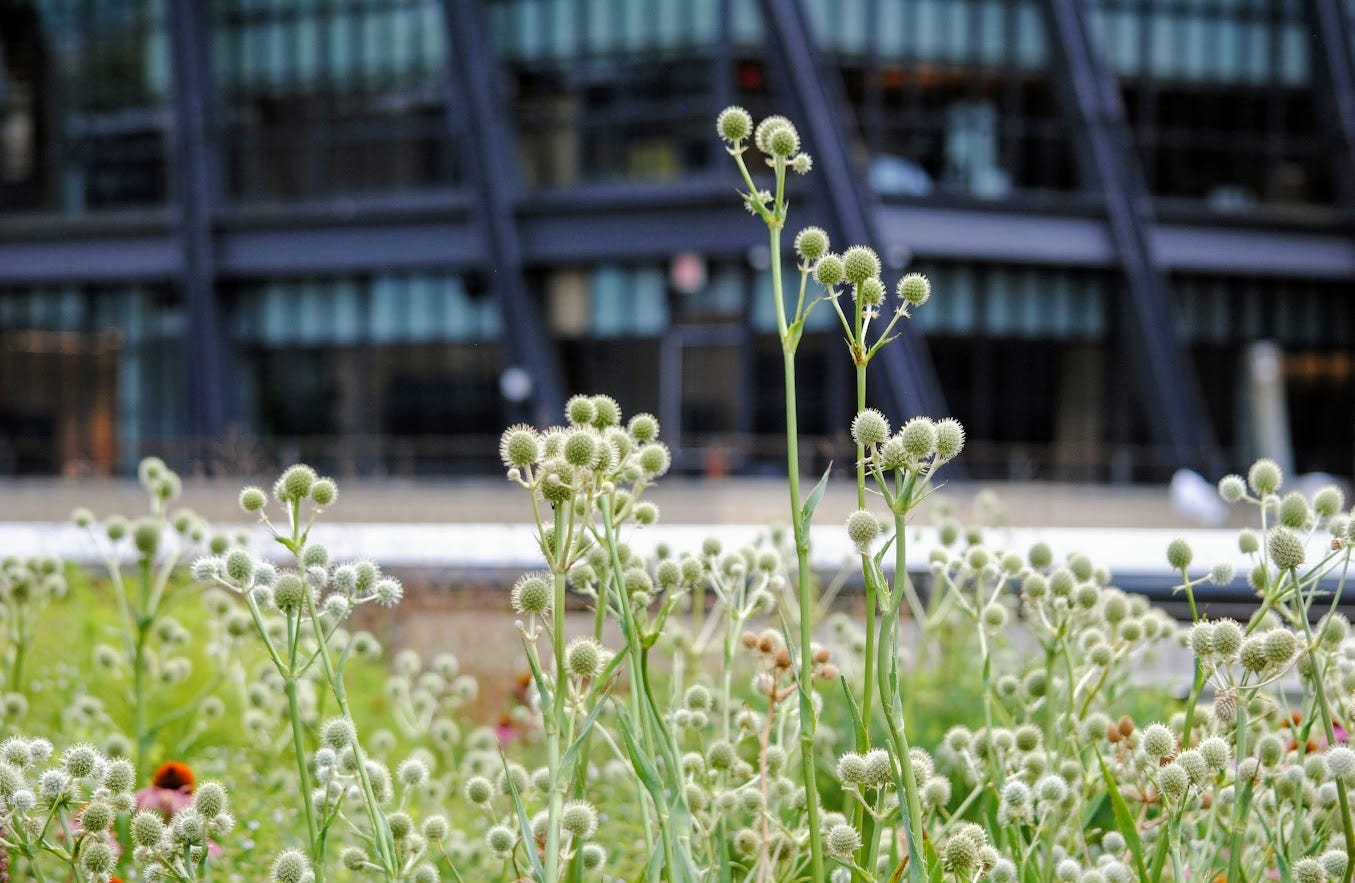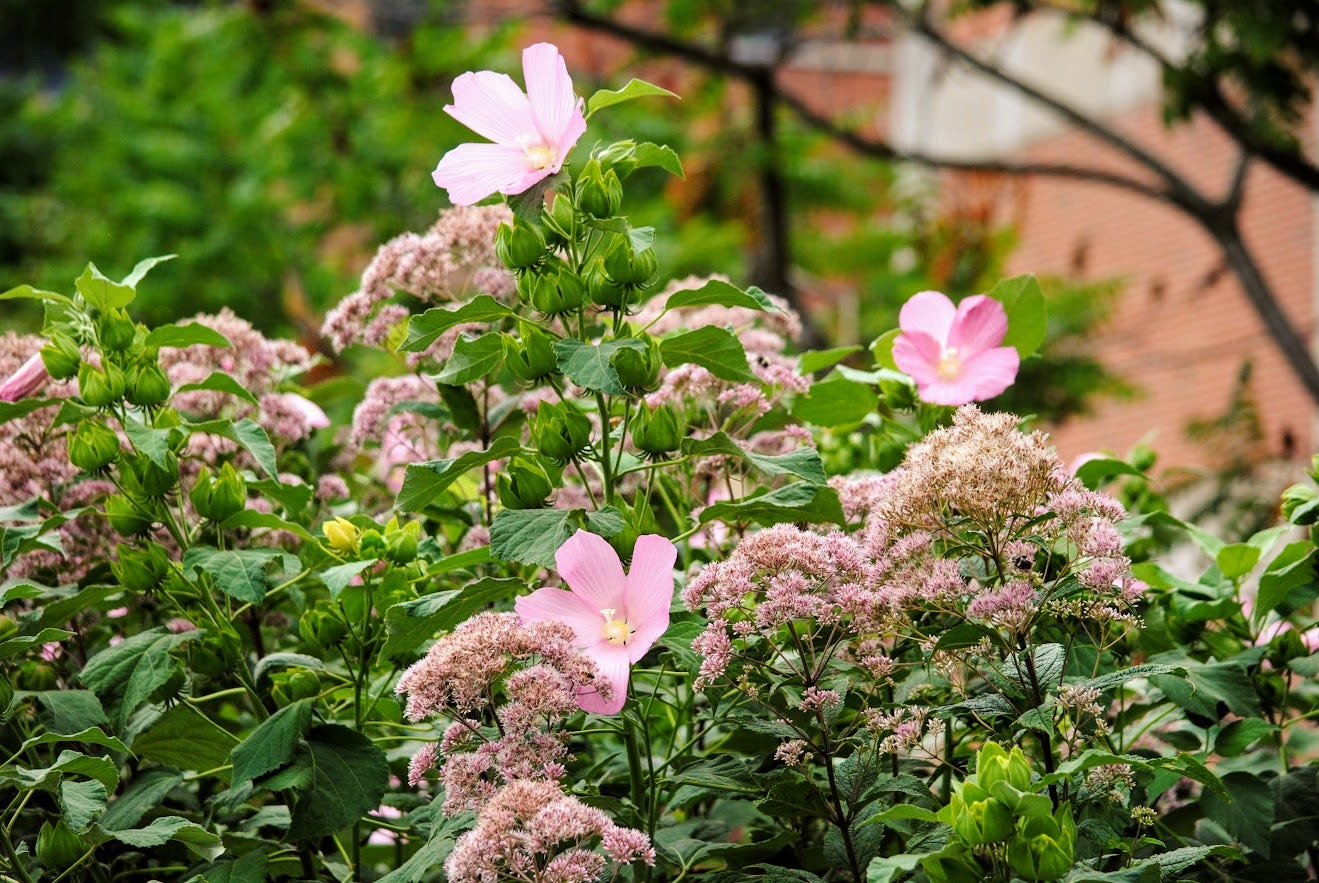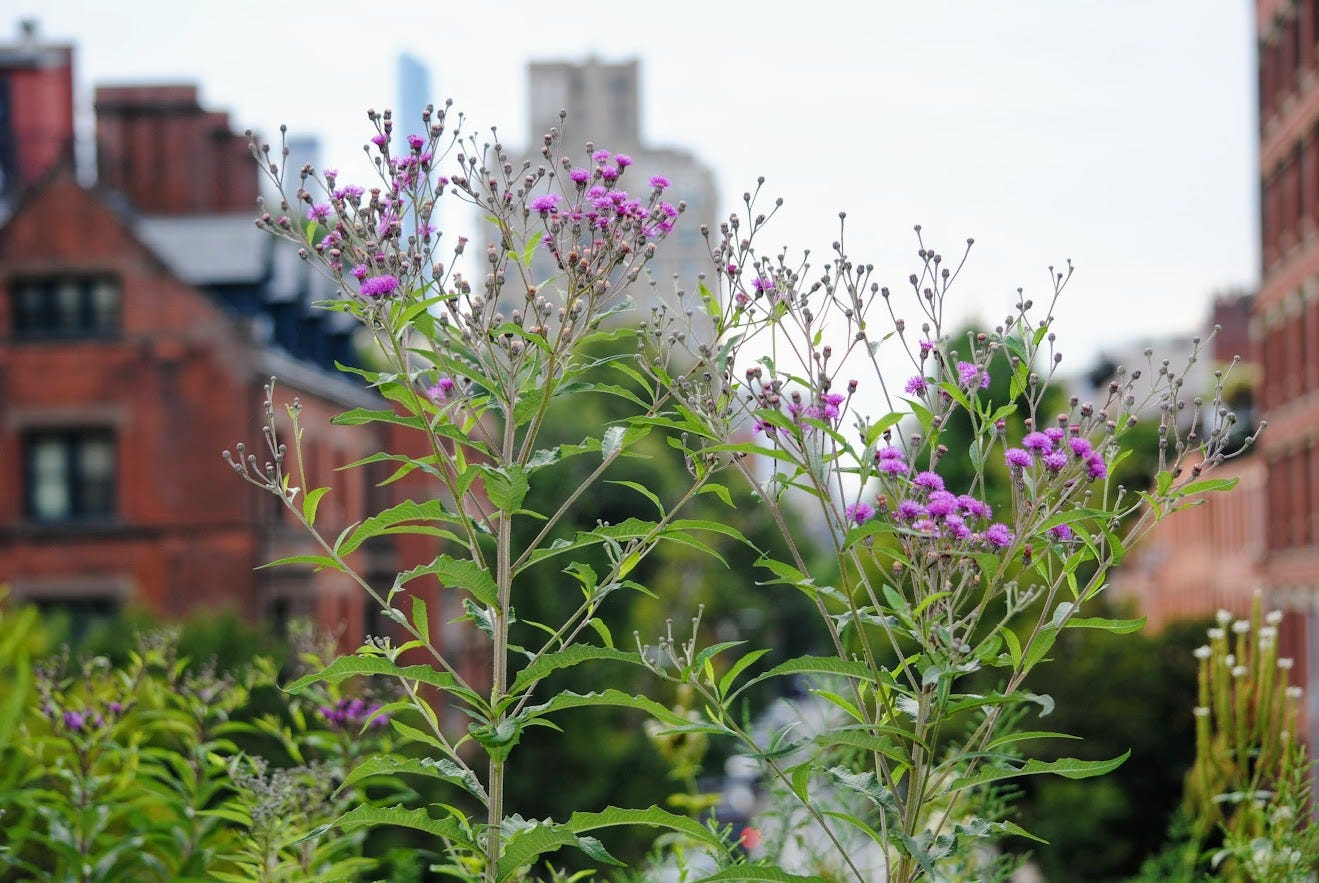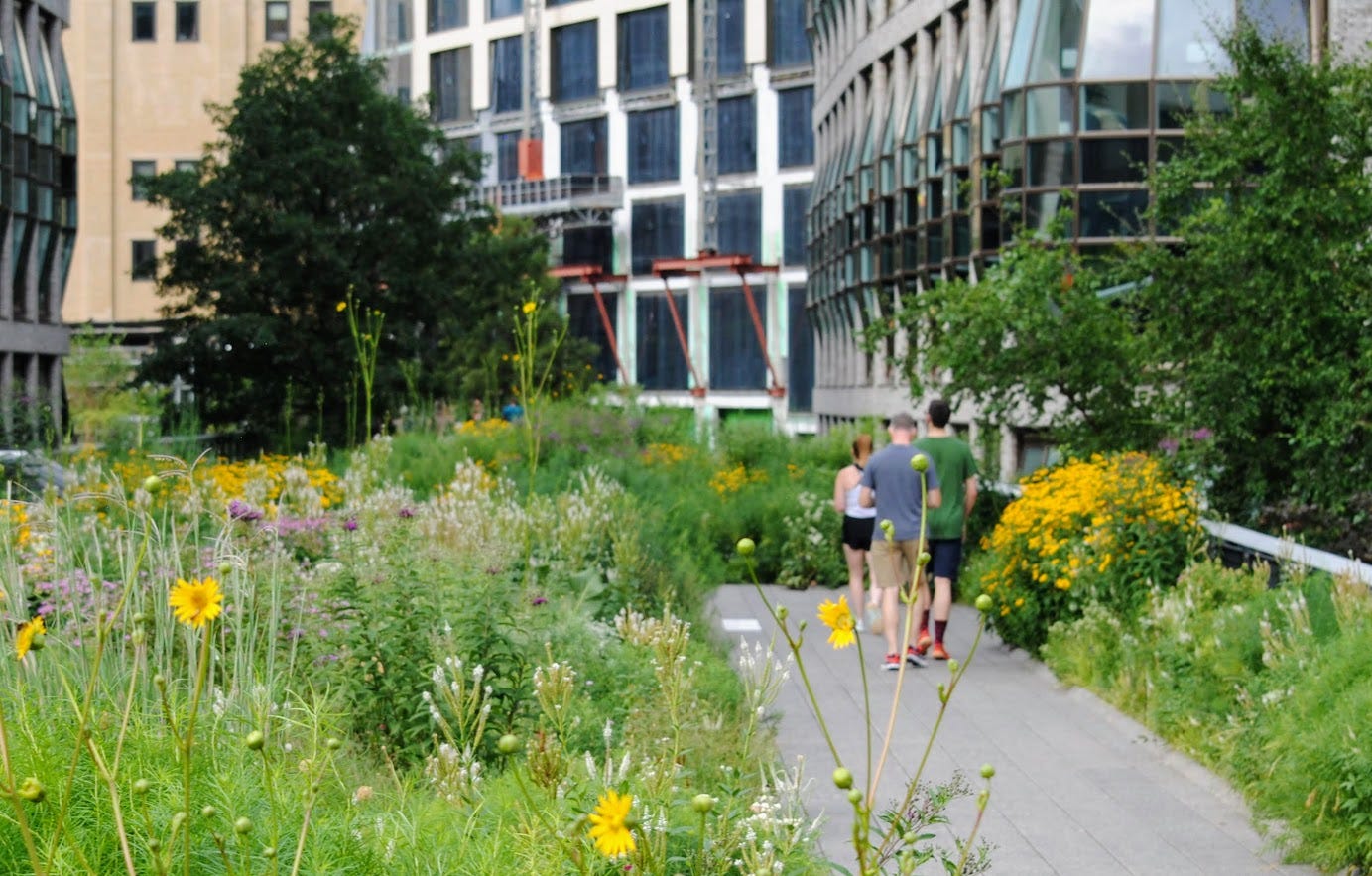Native plant gardens work just as well in urban settings as they do in the countryside. For evidence, look no further than New York City’s High Line.
The High Line is a 1.45-mile “park in the sky” created from an abandoned elevated freight rail on Manhattan’s West Side. It attracts about 8 million visitors a year, more than the Empire State Building or Statue of Liberty.
The plantings were designed by Piet Oudolf. (Yes, I'm on a bit of an Oudolf kick.) He’s the Dutch landscaper responsible for a glorious meadow at the Delaware Botanic Gardens I wrote about last week, among many other high-profile commissions around the globe.
Oudolf's High Line design is meant to reflect natural cycles of life and death, and evoke feelings of being in a wild space. The plants that self-seeded on the tracks while they sat unused provided the inspiration. The aim was to minimize the resources going into the garden, so there’s an emphasis on drought-tolerant, low-maintenance species. As with the Delaware garden, the plant palette is predominantly (but unfortunately not exclusively) native. Also, to the extent possible, plants were sourced from local growers so they’d be better adapted to growing in the city’s climate.
The space encompasses woodlands, grasslands and meadows. One reviewer described the vibe as "unkempt-kempt harmony."
At the Oudolf meadow in Delaware, I was struck by the relationships among plant species. When I visited the High Line a few days ago, though, what really stood out were the interactions between the vegetation and the surrounding cityscape. The lush gardens provide an incongruous but beautiful lens through which to experience lower Manhattan.




The High Line provides food and habitat to hundreds of species of insects and other wildlife. I saw plenty of evidence of this on my visit, but it took some effort to get photographic evidence. Those bees and butterflies are New Yorkers, after all, and they move fast!

Of course, the other animals most attracted to the High Line are humans, who flock to the park in droves. The site’s popularity is a reminder that people not only crave nature, but they also appreciate naturalistic designs -- whether or not they're consciously aware of it.
One of the (many) things Oudolf and the design team did well at the High Line was making the formerly industrial space feel human-scaled, intimate and readable. Like a good book, the landscape propels you forward by delivering pleasant surprises around each corner.
As Oudolf reflects, “The High Line took off not just as a place to go and relax — at once in the city and yet also emotionally outside it — but also as somewhere to stroll up and down and meet friends or perhaps new people. In this, it is a bit like the paseo in a Spanish city.”
The big takeaways? 1) Every patch of dirt, whether urban, suburban or rural, is a potential native plant garden and wildlife habitat. 2) The most successful landscape designs are those that engage people, giving them a sense of belonging, which in turn makes them advocates for sustaining those spaces.
I've been looking for an excuse to share this Grammy-winner from Brittany Howard, and the High Line delivered:
In case you're curious, Howard says this song is about finding whatever it is that makes you feel positive and uplifted. In her case, it's the love of her partner and friends and the artistic freedom to create her own music — not psychoactive substances. May we each find our own highs…perchance in native plant gardens?
Resources
Katie James Watkinson, “The High Line: A Buzzing, Transformed Space,” Condė Nast Traveler.
Piet Oudolf and Noel Kingsbury, Oudolf: Hummelo, The Monacelli Press, 2021.











Nice, Laura. I've been wanting to go for a while now. I need to see it to understand, but can you tell me how they got enough room and soil up there to plant trees and shrubs?
That's awesome, Carrie. Also, happy birthday!